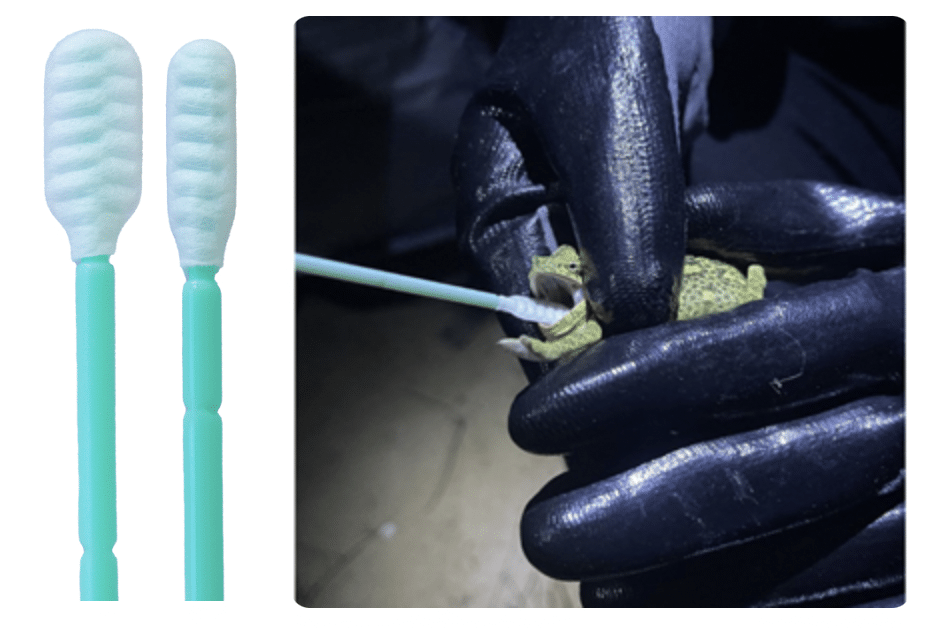
Isohelix products have been used in animal studies across the globe.
From Flies and Fish to Felines and Forest Elephants, Isohelix products are suitable for all types of animals and can be used for an even wider variety of applications, such as population tracking and skin swabbing.
Below are just some of the animals that have been studied using Isohelix products:
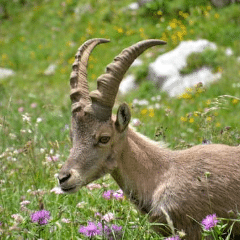
Nubian Ibex
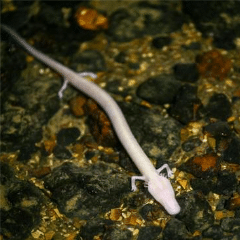
Olm
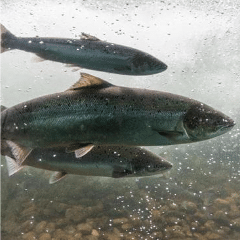
Salmon
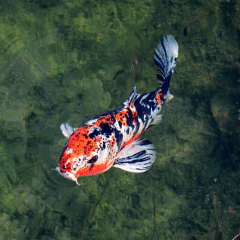
Koi
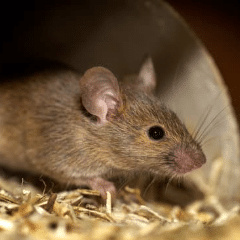
Mice

Cat
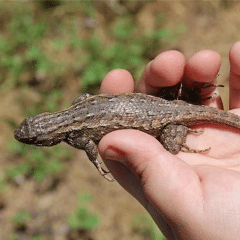
Southwestern Fence Lizard

Dog
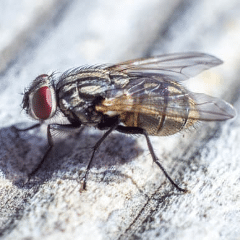
Flies

Tuna

Chimpanzee

Mussels
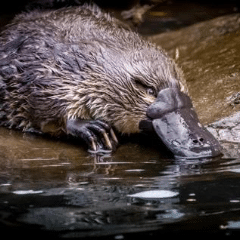
Platypus
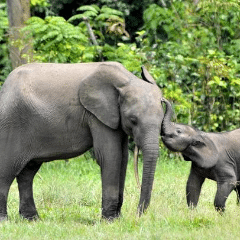
African Forest Elephant
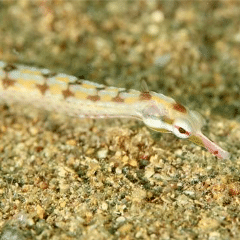
Worm Pipefish
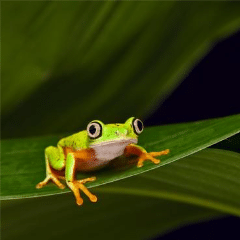
Lemur Leaf Frog
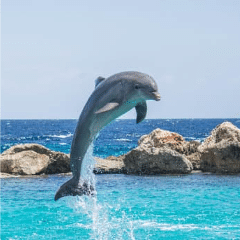
Dolphin
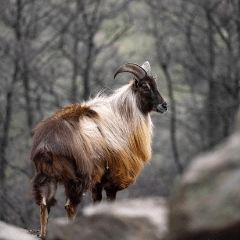
Tahr
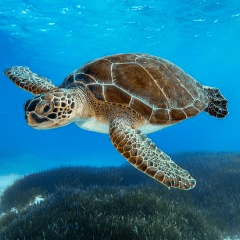
Turtle
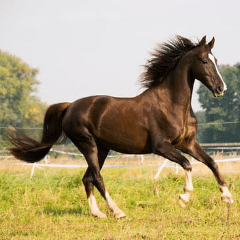
Horse
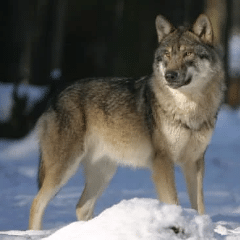
Wolf
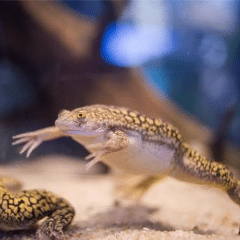
African Clawed Frog
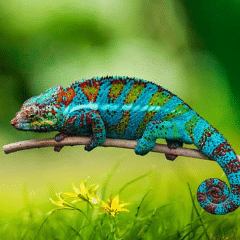
Chameleon
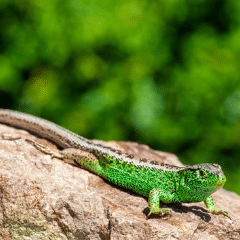
Sand Lizard
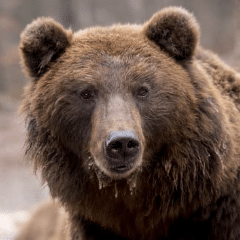
Brown Bear
Mammals
Caprinae
Ross, Steven, et al. “First evaluation of the population structure, genetic diversity and landscape connectivity of the Endangered Arabian tahr.” Mammalian Biology 100.6 (2020): 659-673. https://doi.org/10.1007/s42991-020-00072-4
Rodents
Cheallaigh, Clíona Ní, et al. “A common variant in the adaptor mal regulates interferon gamma signalling.” Immunity 44.2 (2016): 368-379. https://doi.org/10.1016/j.immuni.2016.01.019
Sima, C., et al. “Identification of quantitative trait loci influencing inflammation‐mediated alveolar bone loss: insights into polygenic inheritance of host–biofilm disequilibria in periodontitis.” Journal of periodontal research 51.2 (2016): 237-249. https://doi.org/10.1111/jre.12303
Canine
Dutra, Luísa, et al. “Validating the use of oral swabs for telomere length assessment in dogs.” Journal of Veterinary Behavior 40 (2020): 16-20. https://doi.org/10.1016/j.jveb.2020.07.011
Kropatsch, R., Melis, C., Stronen, A.V., Jensen, H., and Epplen, J.T. (2015) Molecular Genetics of Sex Identification, Breed Ancestry and Polydactyly in the Norwegian Lundehund Breed. J Hered 106 (4): 403-406. https://doi.org/10.1093/jhered/esv031
Ma, Gemma C., et al. “New insights on the epidemiology of Coxiella burnetii in pet dogs and cats from New South Wales, Australia.” Acta tropica 205 (2020): 105416. https://doi.org/10.1016/j.actatropica.2020.105416
Meason-Smith, C., Diesel, A., Patterson, A.P., Older, C.E., Mansell, J.M., Suchodolski, J.S., and Rodrigues Hoffmann, A. (2015) What is living on your dog’s skin? Characterization of the canine cutaneous mycobiota and fungal dysbiosis in canine allergic dermatitis. FEMS Microbiol Ecol 91 (12): (in press). https://doi.org/10.1093/femsec/fiv139
Meason-Smith, Courtney, et al. “Malassezia species dysbiosis in natural and allergen-induced atopic dermatitis in dogs.” Medical mycology 58.6 (2020): 756-765. https://doi.org/10.1093/mmy/myz118
Melis C., Borg Å.A., Espelien I.S., and Jensen H. (2013) Low neutral genetic variability in a specialist puffin hunter: The norwegian lundehund. Anim Genet 44: 348-351. https://doi.org/10.1111/age.12000
Mellanby R.J., Ogden R., Clements D.N., French A.T., Gow A.G., Powell R., et al.(2013) Population structure and genetic heterogeneity in popular dog breeds in the UK. The Veterinary Journal 196: 92-97. https://doi.org/10.1016/j.tvjl.2012.08.009
Older, Caitlin E., et al. “Characterization of Cutaneous Bacterial Microbiota from Superficial Pyoderma Forms in Atopic Dogs.” Pathogens 9.8 (2020): 638. https://doi.org/10.3390/pathogens9080638
Persson, Mia E., et al. “Genomic regions associated with interspecies communication in dogs contain genes related to human social disorders.” Scientific reports 6 (2016). https://doi.org/10.1038/srep33439
Pierezan, Felipe, et al. “The skin microbiome in allergen‐induced canine atopic dermatitis.” Veterinary Dermatology 27.5 (2016): 332 https://doi.org/10.1111/vde.12366
Rogers, Callie M., et al. “Evaluation of the bacterial ocular surface microbiome in ophthalmologically normal dogs prior to and following treatment with topical neomycin-polymyxin-bacitracin.” PloS one 15.6 (2020): e0234313. https://doi.org/10.1371/journal.pone.0234313
Sánchez-Molano, E., Pong-Wong, R., Clements, D.N., Blott, S.C., Wiener, P., and Woolliams, J.A. (2015) Genomic prediction of traits related to canine hip dysplasia 6: 97. https://doi.org/10.3389/fgene.2015.00097
Santoro, Domenico, et al. “Clinical efficacy of spray‐based heat‐treated lactobacilli in canine atopic dermatitis: a preliminary, open‐label, uncontrolled study.” Veterinary dermatology (2020). https://doi.org/10.1111/vde.12915
Simpson, Siobhan, et al. “Multiple genetic associations with Irish wolfhound dilated cardiomyopathy.” BioMed Research International 2016 (2016). https://doi.org/10.1155/2016/6374082
Simpson, Siobhan, et al. “Molecular characterisation of canine osteosarcoma in high risk breeds.” Cancers 12.9 (2020): 2405. https://doi.org/10.3390/cancers12092405
Vladimir, Dimitrijević, et al. “Use of Microsatellites in Genetic Diversity Assessment, Parentage Testing and Individual Identification of the Kangal Shepherd Dog.” Acta Veterinaria 70.2 (2020): 170-181. https://doi.org/10.2478/acve-2020-0012
Werhahn G,Senn H,Kaden J, Joshi J,Bhattarai S, Kusi N, Sillero-Zubiri C, Macdonald DW. 2017 Phylogenetic evidence for the ancient Himalayan wolf : towards a clarification of its taxonomic status based on genetic sampling from western Nepal. R.Soc. opensci.4:170186. https://doi.org/10.1098/rsos.170186
Werhahn, Geraldine, et al. “Himalayan wolf foraging ecology and the importance of wild prey.” Global Ecology and Conservation 20 (2019): e00780. https://doi.org/10.1016/j.gecco.2019.e00780
Primates
Macfarlane, C.M., and Badge, R.M. (2015) Genome-wide amplification of proviral sequences reveals new polymorphic HERV-K(HML-2) proviruses in humans and chimpanzees that are absent from genome assemblies. Retrovirology 12: 35-015-0162-8. https://doi.org/10.1186/s12977-015-0162-8
Hardwick R.J., Machado L.R., Zuccherato L.W., Antolinos S., Xue Y., Shawa N., et al. (2011) A worldwide analysis of beta‐defensin copy number variation suggests recent selection of a high‐expressing DEFB103 gene copy in east asia. Hum Mutat 32: 743-750. https://doi.org/10.1002/humu.21491
Platypus
Kolomyjec, Stephen H., et al. “Regional population structuring and conservation units in the platypus (Ornithorhynchus anatinus).” Australian Journal of Zoology 61.5 (2014): 378-385. https://doi.org/10.1071/ZO13029
Horse
Walsh, Mary L., et al. “Evaluation of the ocular surface mycobiota in clinically normal horses.” Plos one 16.2 (2021): e0246537. https://doi.org/10.1371/journal.pone.0246537
Reptiles
Lizards
Des Roches, S., et al. “Survival by genotype: patterns at Mc1r are not black and white at the W hite S ands ecotone.” Molecular ecology 26.1 (2017): 320-329. https://doi.org/10.1111/mec.13894
Turtles
Thomas, Sarah, et al. “DNA Yield and Turtle Handling Time: Buccal Swabs Versus Blood Samples from Red-Eared Sliders and Eastern Musk Turtles.” Southeastern Naturalist 19.2 (2020): 355-362. https://doi.org/10.1656/058.019.0216
Amphibians
Olm
Balázs, Gergely, et al. “A new non-invasive in situ underwater DNA sampling method for estimating genetic diversity.” Evolutionary Ecology 34.4 (2020): 633-644. https://doi.org/10.1007/s10682-020-10053-1
Frogs
Petchey, Alex, et al. “Characterisation of 9 polymorphic microsatellite markers for the Critically Endangered lemur leaf frog Agalychnis lemur.” Conservation genetics resources 6.4 (2014): 971-973. https://doi.org/10.1007/s12686-014-0261-1
Yergeau, Donald A., et al. “Forward genetic screens in Xenopus using transposon-mediated insertional mutagenesis.” Xenopus Protocols. Humana Press, Totowa, NJ, 2012. 111-127. https://doi.org/10.1007/978-1-61779-992-1_6
Insects
Insects
Finlay, Margaret, et al. “The detection of Bovine Papillomavirus type 1 DNA in flies.” Virus research 144.1-2 (2009): 315-317. https://doi.org/10.1016/j.virusres.2009.04.015
Fish/Aquatic
Fish
Cano, Irene, et al. “Seroconversion and Skin Mucosal Parameters during Koi Herpesvirus Shedding in Common Carp, Cyprinus carpio.” International journal of molecular sciences 21.22 (2020): 8482. https://doi.org/10.3390/ijms21228482
Cano, Irene, et al. “Non‐lethal loop‐mediated isothermal amplification assay as a point‐of‐care diagnostics tool for Neoparamoeba perurans, the causative agent of amoebic gill disease.” Journal of fish diseases 43.7 (2020): 779-790. https://doi.org/10.1111/jfd.13175
Fernandez‐Senac, Carolina, et al. “A comparison of the use of different swab materials for optimal diagnosis of amoebic gill disease (AGD) in Atlantic salmon (Salmo salar L.).” Journal of Fish Diseases 43.11 (2020): 1463-1472. https://doi.org/10.1111/jfd.13243
Pipefish
Monteiro, N. M., et al. “Validating the use of colouration patterns for individual recognition in the worm pipefish using a novel set of microsatellite markers.” Molecular ecology resources 14.1 (2014): 150-156. https://doi.org/10.1111/1755-0998.12151
Mussels
Klymus, Katy E., et al. “Metabarcoding assays for the detection of freshwater mussels (Unionida) with environmental DNA.” Environmental DNA (2020). https://doi.org/10.1002/edn3.166
Lane, Timothy W., E. M. Hallerman, and J. W. Jones. “Phylogenetic and taxonomic assessment of the endangered Cumberland bean, Villosa trabalis and purple bean, Villosa perpurpurea (Bivalvia: Unionidae).” Conservation genetics 17.5 (2016): 1109-1124. https://doi.org/10.1007/s10592-016-0847-0
Smith, Chase H., et al. “Resolving species boundaries in the critically imperiled freshwater mussel species, Fusconaia mitchelli (Bivalvia: Unionidae).” Journal of Zoological Systematics and Evolutionary Research 59.1 (2021): 60-77. https://doi.org/10.1111/jzs.12412
Willsie, Julia A., Todd J. Morris, and David T. Zanatta. “Morphometric Analyses Distinguish Wabash Pigtoe (Fusconaia flava) and Round Pigtoe (Pleurobema sintoxia) Mussels.” Diversity 12.9 (2020): 337. https://doi.org/10.3390/d12090337
Dolphin
Robinson, Chloe Victoria, and Hanna Katariina Nuuttila. “Don’t Hold Your Breath: Limited DNA Capture Using Non-Invasive Blow Sampling for Small Cetaceans.” Aquatic Mammals 46.1 (2020): 32-41. https://doi.org/10.1578/AM.46.1.2020.32
